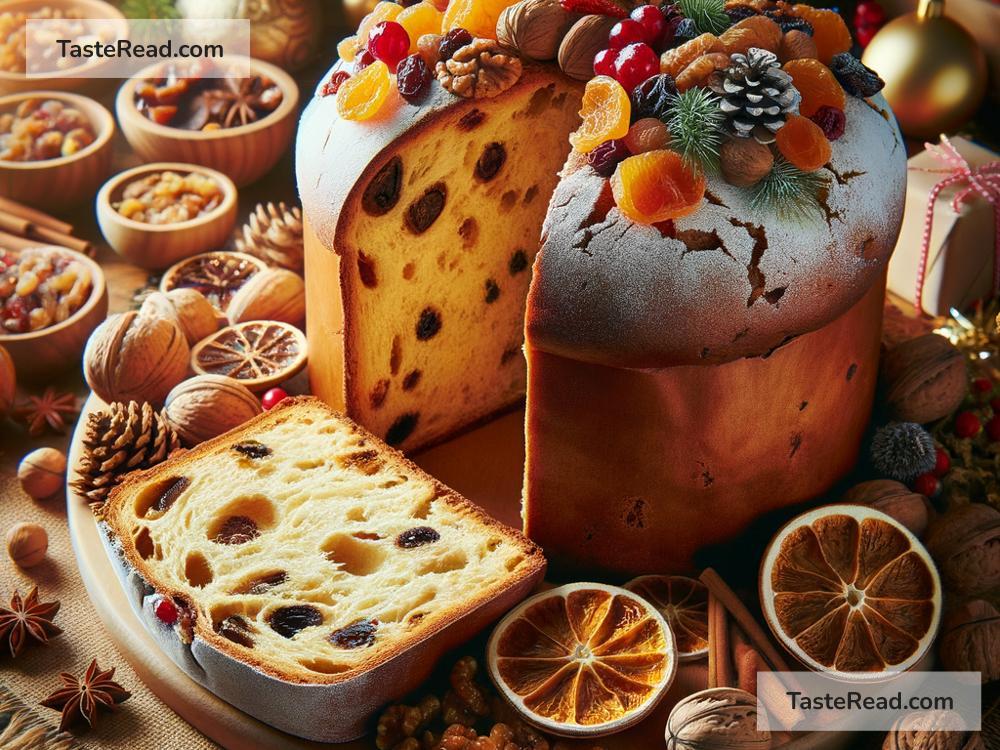The Influence of the Italian Panettone: A Sweet Tradition
When you think of Italian food, pizza, pasta, and gelato may come to mind. But there’s another iconic Italian treat that has traveled far and wide: panettone. This sweet, dome-shaped bread is more than just a food—it’s a symbol of joy, celebration, and connection. Today, panettone is enjoyed not only in Italy but also in many corners of the world. In this blog, we’ll explore the history, traditions, and influence of panettone, and how it became an international favorite.
What is Panettone?
Panettone is a type of sweet bread that traditionally comes from Milan, a city in northern Italy. It’s made with a rich dough, raisins, candied orange peels, and sometimes lemon zest, giving it a unique and delightful flavor. The bread has a tall, fluffy shape—almost like a cake—and takes hours, sometimes days, to prepare because of its slow fermentation process.
The texture of panettone is light and airy, and it’s often served during Christmas and New Year’s celebrations in Italy. Over the years, bakers have added their own twists, using chocolate chips, nuts, or even exotic fruits to create new variations.
A Brief History of Panettone
Panettone’s origins are rooted in Italian legend and tradition. Some stories say it was invented in the 15th century by a young baker named Toni, who created this sweet bread to impress his lover. His boss loved it so much that they named it “Pan di Toni” (Toni’s Bread), which later became “panettone.”
Whether the legend is true or not, historians believe that panettone became popular in Milan during the Renaissance. Wealthy families served it as a symbol of luxury because sugar, spices, and dried fruits were expensive during this time. Over the centuries, panettone evolved and spread throughout Italy, becoming an iconic holiday dessert.
In the early 20th century, industrial production made panettone more accessible to everyday people. Big Italian companies like Motta and Bauli began making large quantities of panettone, allowing it to be sold in supermarkets and exported to other countries.
Traditions Surrounding Panettone
In Italy, panettone is more than just food—it’s part of holiday traditions. During Christmas, families come together to enjoy meals filled with laughter and good conversation. Panettone often serves as the grand finale of the feast, accompanied by espresso, hot chocolate, or sparkling wine.
When gifting panettone, its tall and decorative packaging adds to the festive spirit. Many Italians believe sharing panettone brings good luck, and it’s common to give it to friends, neighbors, or coworkers during the holidays.
There’s also a playful custom in Italy called the “panettone challenge.” After Christmas, families compete to make their leftover panettone last as long as possible. Some turn it into French toast, pudding, or even gelato toppings to savor the joy of the season a little longer.
Panettone Around the World
Today, panettone is no longer just an Italian tradition—it’s a global sensation. You can find it on supermarket shelves in the United States, Europe, South America, and even parts of Asia during the holiday season. How did this humble Milanese bread become so influential?
One reason is Italy’s strong global presence. Italian immigrants brought their traditions, including panettone, to countries like Argentina, Brazil, and the United States. In places with large Italian communities, holiday celebrations often include panettone.
Additionally, international chefs and bakers have embraced panettone for its versatility and charm. Some make gourmet versions with luxury ingredients like saffron, rum-soaked raisins, or hazelnut cream. Others create fusion flavors, mixing local tastes with the classic recipe. For example, in Japan, you can find matcha (green tea) panettone, while in Mexico, churro-flavored panettone is becoming popular.
Panettone has also gained attention for its artisanal quality. Skilled bakers use traditional methods to make each loaf by hand, ensuring its flavor and texture are perfect. These handcrafted versions are often sought after by food lovers worldwide, showcasing the influence of Italian craftsmanship.
The Economic Power of Panettone
Beyond its cultural role, panettone has become a significant part of Italy’s economy. The global market for Italian panettone grows every year, with millions of loaves exported during the Christmas season. Countries like Brazil and Peru, where Italian-inspired sweets are highly appreciated, have developed their own versions of panettone to meet local tastes.
This sweet bread has also inspired friendly competition. In Milan, famous pastry chefs compete in “panettone contests” to see who can create the best-tasting loaf. These events attract tourists and boost the reputation of Italian baking worldwide.
A Taste of Connection
Panettone is more than just a dessert; it’s a way to bring people together. Whether it’s shared at a family dinner in Italy or exchanged as a gift in Brazil, panettone carries the spirit of love and celebration. Its influence reminds us of how food connects cultures, traditions, and generations.
In a world that’s constantly changing, panettone remains a timeless treat—a fluffy reminder of sweet moments spent with loved ones. So, the next time you unwrap a brightly packaged panettone, take a bite and savor a piece of Italian history that’s made its way around the globe.


